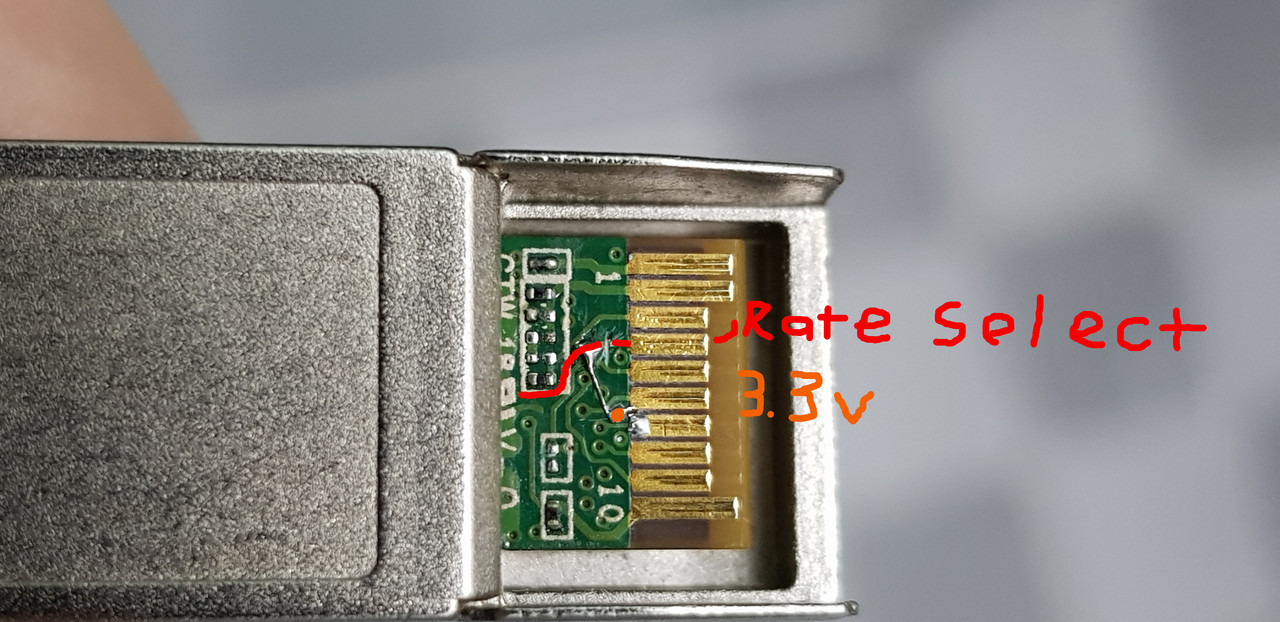OK guys, I managed to get this module to work with my ER-X-SFP, this module act very strangely compared to other modules (maybe software bug?)
What you need to do is to pull the Rate Select/Pin 7 to HIGH, leave it floating or LOW will result in a reboot loop every 30s, in the pic above I've cut the trace to the contacts and bodged a wire to a via hole that connected to the VccT on the other side which should be tied to 3.3v, resulted is my ER-X-SFP has recognized it and I am able to dial PPPoE successfully (my ISP does not check GPON S/N or SLID), the module now also worked with the generic Chinese Qualcomm SFP switch, the link is detected and PPPoE worked fine.
If your router/switch leave the Rate Select pin floating then you can just tied it to the 3.3v and does not need to cut the pin... but the ER-X-SFP having it's Rate Select pin tied to GND so the only way is to cut it, I've asked UBNT and they said the pin is not able to control by software so it's a dead end on the ER-X-SFP side.
I also have received another FGS202 module which has English text on it, it also acted the same when you leave the pin floating so I think the two French and English text variants are the same, just relabeled for French's Orange ISP.

